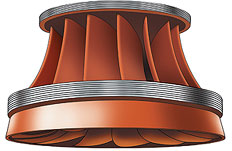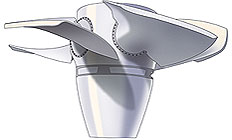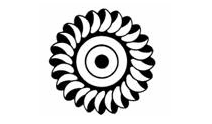Turbines
- Turbine type according to available head
-
Propeller up to 15 metres Kaplan up to 30 metres Francis 10 to 300 metres Pelton 300 metres and over
 Francis turbine
Francis turbine The Kaplan turbine is similar to the propeller turbine except that its blades are adjustable.
The Kaplan turbine is similar to the propeller turbine except that its blades are adjustable.
 Pelton turbine
Pelton turbine
Turbines convert the energy of rushing water, steam or wind into mechanical energy to drive a generator. The generator then converts the mechanical energy into electrical energy. In hydroelectric facilities, this combination is called a generating unit.
Francis turbine
The most commonly used turbine in Hydro-Québec's power system. Water strikes the edge of the runner, pushes the blades and then flows toward the axis of the turbine. It escapes through the draft tube located under the turbine. It was named after James Bicheno Francis (1815-1892), the American engineer who invented the apparatus in 1849.
Kaplan turbine
Austrian engineer Viktor Kaplan (1876-1934) invented this turbine. It's similar to the propeller turbine, except that its blades are adjustable; their position can be set according to the available flow. This turbine is therefore suitable for certain run-of-river generating stations where the river flow varies considerably.
Each Kaplan turbine at Brisay generating station weighs 300 tonnes... That's the weight of 50 African elephants.
Propeller turbine
Since they can reach very high rotation speeds, propeller turbines are effective for low heads. Consequently, this type of turbine is suitable for run-of-river power stations.
Pelton turbine
Named after its American inventor, Lester Pelton (1829-1908), this turbine uses spoon-shaped buckets to harness the energy of falling water.

